Last week I attended 40 hour HAZWOPER training. HAZWOPER, an acronym for Hazardous Waste Operations and Emergency Response Standard, is OSHA mandated training for employees who may potentially be exposed to hazardous substances and who are engaged in cleanup operations or other certain other activities involving hazardous waste. Normally I work in an office, and the closest I come to hazardous materials or waste is sitting at a computer and analyzing data from hazardous waste sites. However, there is a possibility that I may sometimes be asked to go to a site where HAZWOPER training would be necessary, and I had an opportunity to take the training, so I did.
HAZWOPER training includes topics such as basic chemistry, toxicology, biology, radiation, environmental science, analytical sampling, and law and regulations. Truthfully, I could have taught a good portion of the training. It also includes hands on training with some of the sampling methods and instruments that are used in the field. Personally, I think playing with instruments and sampling materials is fun. As part of the training, you are required to get dressed in various personal protective equipment (PPE) that would be required under various circumstances at sites. In general, you look rather ridiculous in the PPE, but of course PPE is not supposed to be fashionable or make you look good, it is supposed to protect you from hazardous materials that could kill you or cause injury or illness. What PPE does not do, is keep you cool. It was in the 90’s °F when we were dressing in the PPE. While the suits protect you from most hazards, ironically they can cause potential health hazards if you over heat. There are different levels of PPE that are used depending on what the potential hazards are. The most protective is Level A, which is a fully encapsulating chemical-protective suit with positive pressure, full face-piece self-contained breathing apparatus (SCBA), inner and out gloves, and boots.
The next level, Level B PPE, is slightly less protective and includes chemical-resistant coveralls instead of the fully encapsulating suit, as well as SCBA, inner and outer gloves, and boots.
The next level, Level C PPE, is less protective still. It includes an air purifying respirator instead of SCBA, but other than that is fairly similar to Level B.
There is one final level, which is Level D PPE, which is minimal protection from physical hazards but does not include respiratory protection. This may sound strange, but if it is hot, Level A is actually easier to wear than B or C. The fully encapsulating suit is roomier, and the compressed air is continually blowing through your mask and then through the suit itself before it exits an exhaust vent. This air flow helps to cool you. In the chemical resistant suit for Level B and C, I just felt like a turkey that had been baked in a cooking bag. Side note, the SCBA tanks we used were made of a composite material and weighed about a third of the weight of the metal SCUBA tanks I have worn before. Also, for as cumbersome as it was to get dressed out in all the PPE, I think it was easier to dress in and walk around in the PPE compared to the SCUBA drysuit I was wearing a month beforehand while SCUBA diving Silfra. Obviously once underwater, the tank weight is negligible, and the drysuit becomes less cumbersome, but above water, they are really difficult to get into and move.
For HAZWOPER training, you don’t just have to get dressed in the different levels, you need to get used to actually moving and doing various tasks in them. Hence, when we first wore them, our tasks were to play with balls, as one would normally do at a hazardous waste site.
Note in the above photo, the person in the center is wearing proper head protection in the form of a straw cowboy hat. No, he actually just being fashionable. Wearing hazardous material PPE is no reason to not be fashionable.
We also did a few exercises to practice tasks at a hazardous materials site, including decontamination. There are set steps and tasks to make sure decontamination is done properly. The first pair of people wash the worker, the second pair wash the worker again, the third set inspect the cleaning, and the fourth set help the worker out of the PPE. Notice the use of walkers for the worker to hold onto while the decontamination team washes the boots. There is no dignity in any of this.
We also practiced emergency decontamination of an incapacitated worker. We actually did not finish this task. This was due to the fact that after they started decontaminating him, someone loudly said, maybe we will have to do mouth to mouth. At that point, the incapacitated worker suddenly regained conscienness and took off running.
Since this was practice and not a real situation, we did a few things you can’t do on a real site. For example, the decontamination team stayed inside when not needed outside and did various things to stay cool. One thing that we did was lay on the concrete floor because the concrete was cooler than the air, and it absorbed some of your body heat. Sure, we looked like casualties at a hazardous waste site, but it worked and helped keep us cooler.
We also took “hits” of the compressed air from the SCBA. The full face masks we wore were interchangeable for either air purifying filters or for the hose from SCBA. In between tasks, we didn’t wear either. However, we would attach the SCBA for short periods of time because the compressed air blowing into your mask helps to cool you.
Another thing that should never be done at a real site was drinking water through the mask via a straw. Actually it might be acceptable to do this, assuming someone with clean hands put the straw in the bottle and then into your mask. It is not acceptable if you are doing this with your gloves.
For as hot as I was while in some of the PPE, I still had fun. I was out of the office, and that in itself was fun. Also, I learned a bit, and that is always fun.

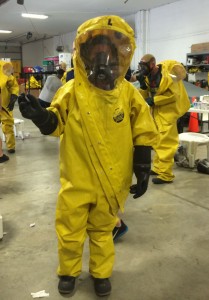
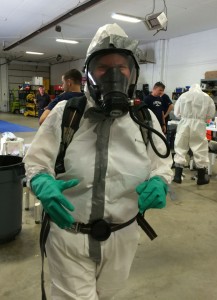
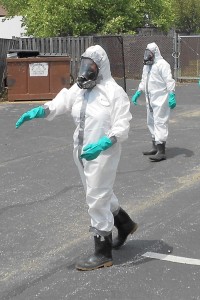
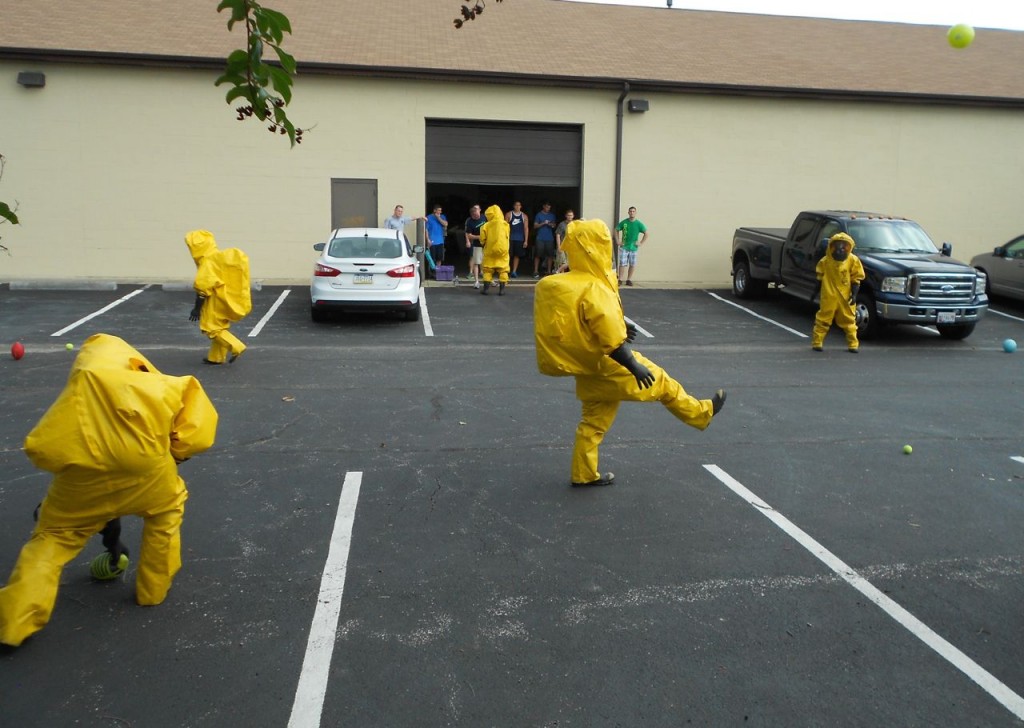
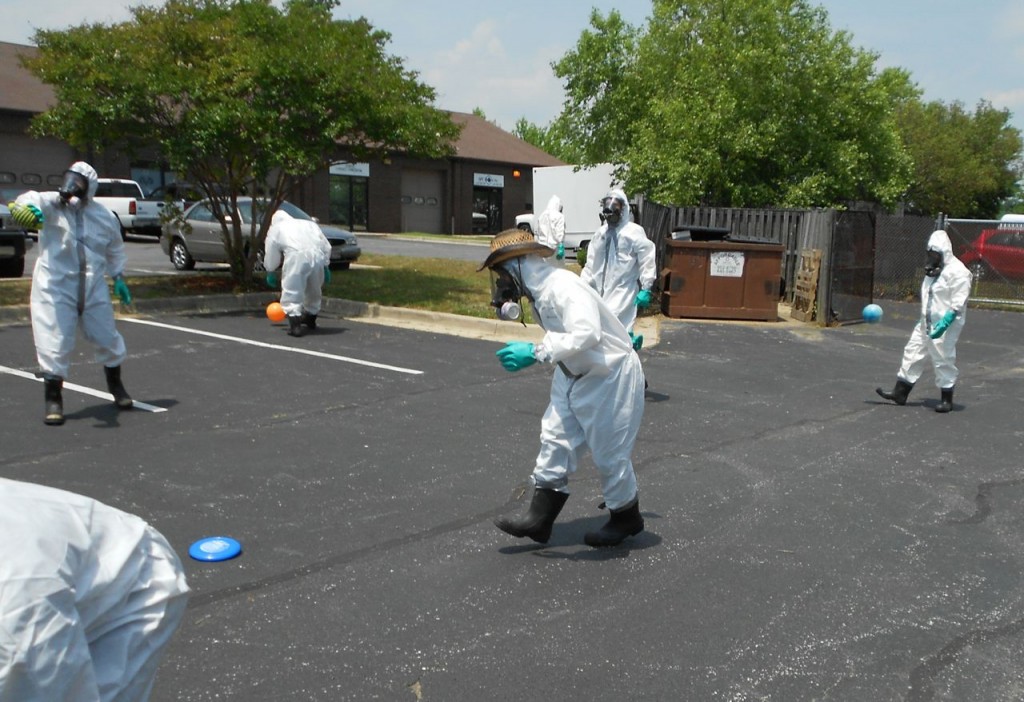
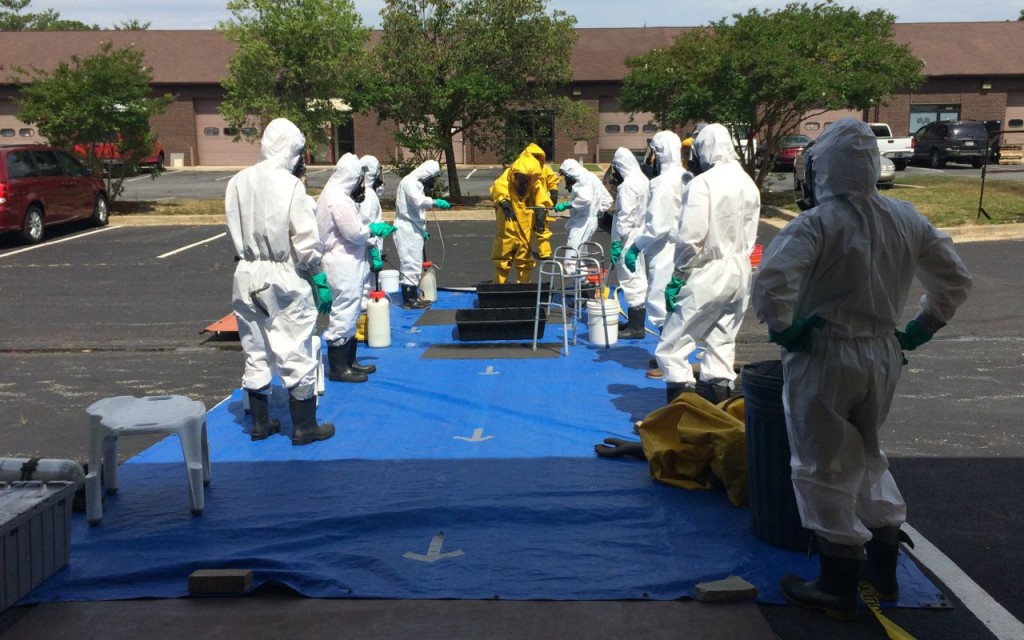
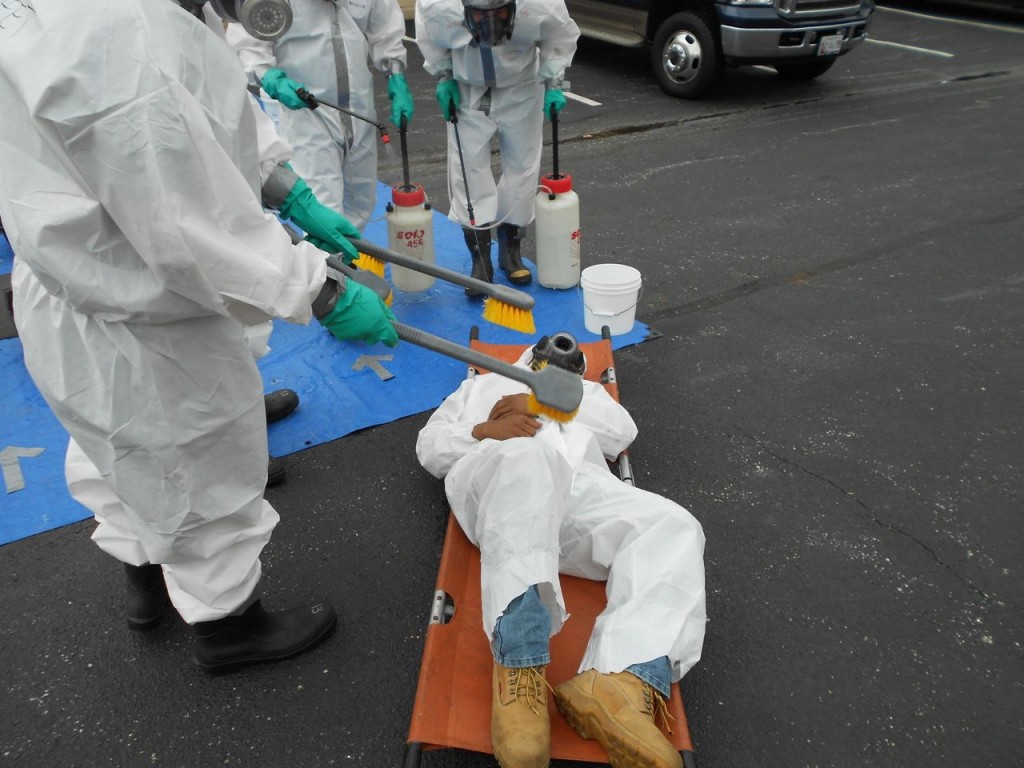
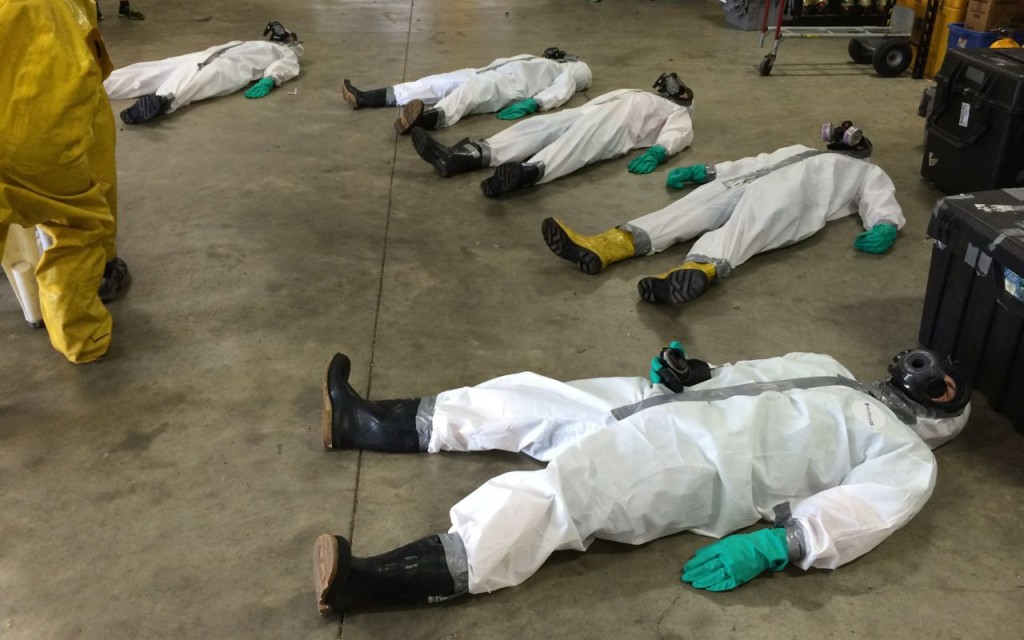

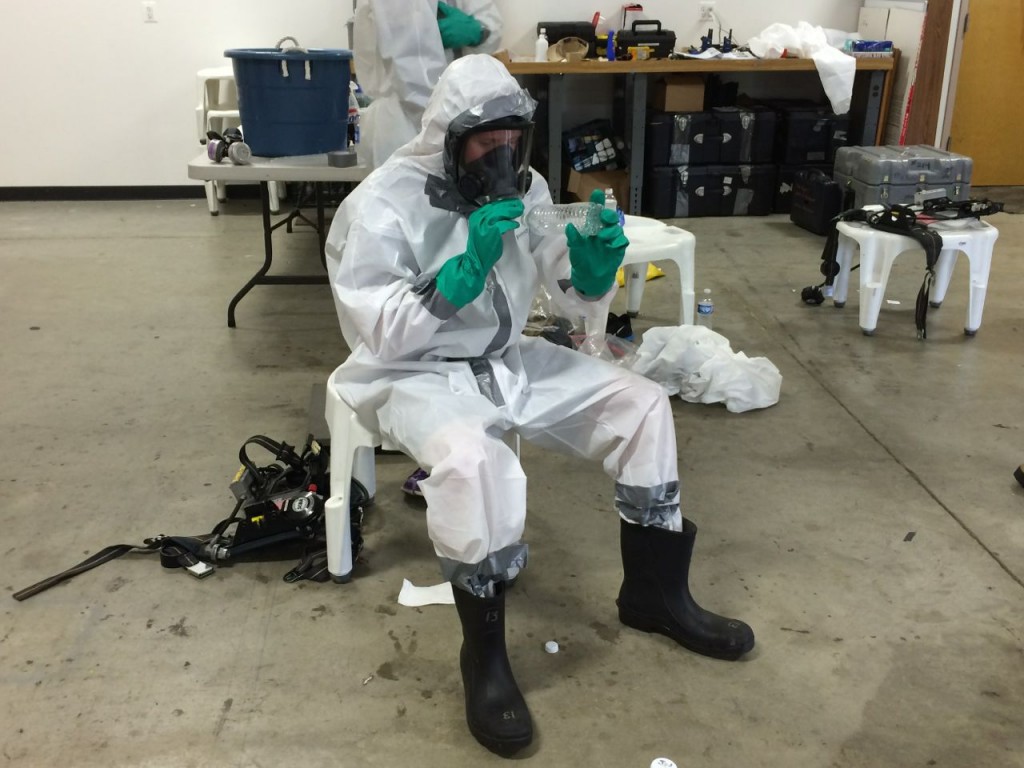
Thank you so much for you enjoyable article about your hands-on experience. You explained it so well and kept my attention the entire way through.
Pingback: Being #DistractinglySexy | Geeky Girl Engineer